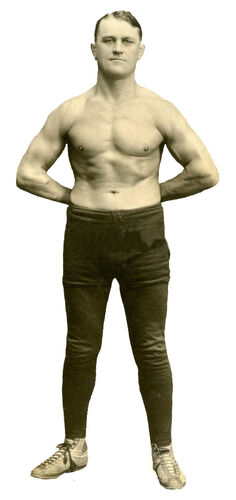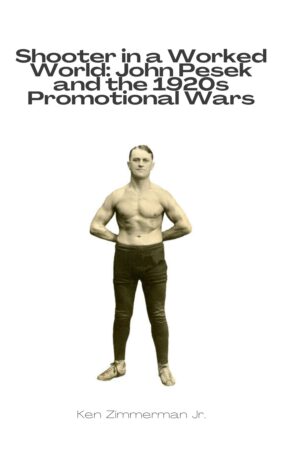Pesek Palm Strikes Rickard van Wrestling
Teen die einde van die 1910's, professionele stoeipromotors het stoeiers bespreek in gewerkte of vooraf gereëlde stoeiwedstryde. Occasionally, gewoonlik as gevolg van 'n dubbelkruis, aanhangers sal 'n werklike kompetisie sien of “shoot” wedstryd tussen die stoeiers. Een van hierdie wedstryde het laat plaasgevind 1921 en het ontstaan uit 'n vete tussen Tex Rickard, hoofsaaklik 'n bokspromotor, and Jack Curley, who was primarily a wrestling promoter.
Rickard and Curley partnered to promote a boxing event in New York City that failed financially. Both men blamed the other. Wanting to get back at Curley, Rickard started promoting professional wrestling.

Foto van John Pesek van die Public Domain
About this time, Curley lost the rights to promote Madison Square Garden. The New York State Athletic Commission awarded the license to promote wrestling at Madison Square Garden to Rickard based on his success as a boxing promoter. Egter, to successfully challenge Curley and create a competitive product, Rickard had to secure wrestlers the public wanted to see. It wouldn’t be easy because Rickard was an outsider and not affiliated with any of the promotions, who booked the wrestlers.
Rickard secured the services of a skilled, legitimate wrestler, who was out of favor with the established promoters. Marin Plestina started wrestling professionally in 1910. World Heavyweight Wrestling Champion Frank Gotch and Gotch’s trainer Martin “Boer” Burns trained Plestina for professional wrestling. Plestina challenged current World Heavyweight Champion Ed “Worger” Lewis to a title match but Lewis ignored the challenge.
After signing Plestina, Rickard harassed Curley for almost two years before Curley agreed to match Plestina with one of Curley’s wrestlers. Curley would not book Plestina against Lewis or one of the top contenders. In plaas daarvan, Curley booked John “Tierman” Pesek to wrestle Plestina.
Pesek was a known “hooker”, the wrestling term for a skilled submission wrestler. Pesek could break your arm with his double wristlock or tear your leg ligaments with the toehold. Even though he weighed 185 pond, he had knocked out larger wrestlers by slamming them. Egter, Pesek did not enter the ring to beat Plestina in this contest.
When the wrestlers entered the Madison Square Garden ring on November 15, 1921, fans could see Plestina, who had a elbow injury, was not in good condition. Unable to train leading up to the bout, Plestina was a sitting duck for Pesek.
With Plestina’s visibly injured arm, Pesek could have secured a double wristlock early on and ended the match with a victory. Egter, Pesek wanted to ruin the show, so he palm struck, butted, gouged Plestina’s eyes and committed every foul in the book.
After a few minutes, the fans began booing loudly. The referee disqualified Pesek three times. At the end of the third disqualification, Pesek jumped from the ring, ended the match and walked out of the arena in disgust.
The stench of the bout caused Rickard to quit promoting wrestling. Rickard said after the match that he was going back to boxing. Curley and his crew had achieved their objective.
Pesek was a skilled wrestler although not on the level of Ed “Worger” Lewis. Lou Thesz in his book Hoeker talks about his conversations with Thesz’s mentor, En “Worger” Lewis. Even though Pesek served as Lewis’ policeman for several years, Lewis did not mention Pesek as being on his level.
Promoters enlisted Pesek to turn back one more promotional challenge two years later but Pesek hurt his career badly in 1926. After working two worked matches with current World Champion Joe Stecher, Pesek double-crossed Stecher in the third match with a double wristlock. Pesek forced Stecher to submit but the referee disqualified Pesek. The fans rioted but Stecher kept his title. Promoters stopped booking Pesek regularly after he attempted to steal the title.
You can leave a comment or ask a question about this or any post on my Facebook bladsy.
Sources: St. Louis Post-Dispatch, November 16, 1921 edition, p. 19 and Pro Wrestling Database
Pin It

